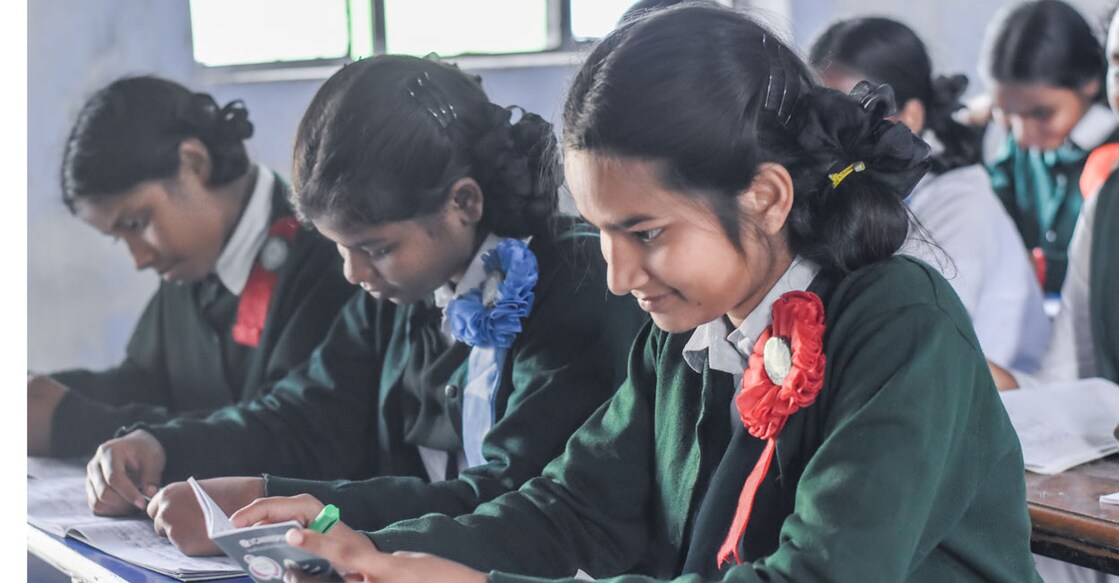School reopening guidelines out: Bio-bubbles within classes to keep children insulated

Mail This Article
As schools are set to open on November 1, general education minister V Sivankutty on Friday released a set of guidelines schools will have to adhere to while re-opening amid the pandemic. Classes from one to seven and 10th and 12th standard will begin from November 1. The remaining classes will begin from November 15.
The guidelines are mainly related to the creation of bio-bubbles, scheduling of classes, and practical tips for schools and teachers.
Creation of bio-bubbles
Schools have to develop 'bio-bubbles' for each class. A bio-bubble is a group of six to 10 students in a class. This means that a single class will have two or three bio-bubbles. The shorter the bio-bubble the better.
If students within a bio-bubble are coming from the same area, their travel should also be arranged together. Student interactions will be allowed only within a bio-bubble, a student in one bio-bubble will not be allowed to have any contact with a student in another bio-bubble.
The guidelines say that teachers should also try to be part of bio-bubbles, at least at the primary class level. Variable timings for the starting of classes, interval and school leaving, according to the guidelines, would limit the crowds at entrance gates and toilets.
Sports, school assembly or any event that would require students to come together have been prohibited. Sharing, which is so much part of school life, will also have to be kept in abeyance. The guidelines say that students should refrain from sharing school books, food and drinking water. They will also have to wear masks all the time.
Practical classes will have to be conducted in small groups. Instruments that could be used by more than one student should be disinfected after each use.
General recommendations
One, students should attend classes only with the permission of parents. Two, students should follow COVID protocols both within the classroom and the campus. Three, there should not be more than two students on a bench in classes one to seven. Four, only half the strength of a class should be present on a given day. Five, classes can begin between 9am and 10am.
Six, classes should ideally end by noon for the first two weeks; there will be classes on all Saturdays, except public holidays. Seven, in large schools with over 1000 students, attendance should be so arranged that only 25% of the total strength of the school should be present on the campus on a given day.
Eight, students can be segregated into batches to control their numbers. Nine, each batch should be allowed to attend classes for three consecutive days; in schools with higher numbers, the number of consecutive days for a batch can be limited to two; the opinion of parents too should be sought while creating batches.
Ten, differently-abled children need not attend classes in the first phase of the reopening; nonetheless, special schools for speech- and hearing-impaired children can reopen. Eleven, children with suspicious symptoms (cough, fever, cold, throat pain), children/staff who are primary contacts, those quarantined and those living in containment zones should keep away from schools.
Twelve, only rooms with good air circulation should be used as classrooms; wherever possible, classes should be taken in open areas. Thirteen, parents who take children to schools should not enter the campus and should not form groups outside the campus.
Fourteen, mid-day meals can be given by strictly following COVID protocols. Fifteen, all teaching and non-teaching staff should have taken two doses of the vaccine before school reopens. Sixteen, drivers of vehicles that take children to school should also take doses of vaccination. Seventeen, a helpline should be started at all schools.
School infrastructure
One, schools should complete maintenance by October 25, schools should also be painted colourfully to welcome students. Two, all campuses should be subjected to complete sanitation; all areas where student activity would be high - from class furniture, labs and library to water tankers, wash basins, toilets and kitchens - should be disinfected.
Three, posters demonstrating COVID-appropriate behaviour should be prominently displayed. Four, there should be social-distancing markers at areas where students crowd like canteen, wash areas and toilets.
Tips for teachers
One, all school teachers should collect comprehensive information about all the students under their command, namely the place of residence, the distance to school, local body and ward from which the students come, family members, their age, and information about the sick people at their homes.
Two, they should convince the parents of the importance of providing regular health updates of their children and those close to them.

